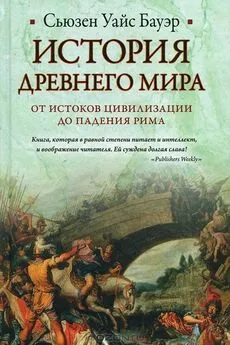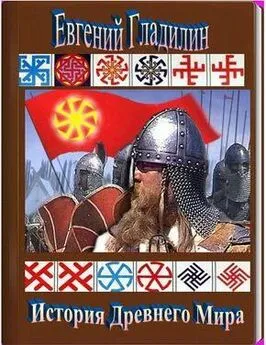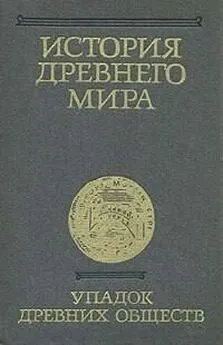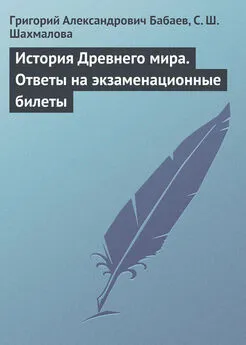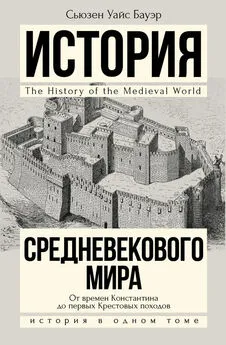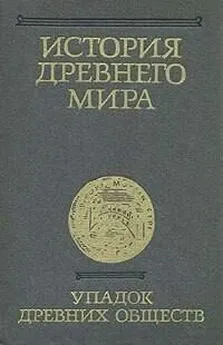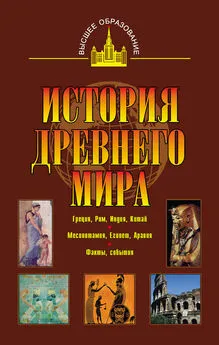Сьюзен Бауэр - История Древнего мира: от истоков цивилизации до падения Рима
- Название:История Древнего мира: от истоков цивилизации до падения Рима
- Автор:
- Жанр:
- Издательство:АСТ, Астрель
- Год:2011
- Город:Москва
- ISBN:978-5-17-057026-3, 978-5-271-37483-8
- Рейтинг:
- Избранное:Добавить в избранное
-
Отзывы:
-
Ваша оценка:
Сьюзен Бауэр - История Древнего мира: от истоков цивилизации до падения Рима краткое содержание
В этой книге Сьюзен Бауэр выдвигает и доказывает интереснейшую теорию взаимодействия и взаимопроникновения культур самых разных западных и восточных цивилизаций.
Не просто сухие факты, но подробный и яркий рассказ о внешней и внутренней политике государств древности, об их литературе, религии и мифологии, повседневной жизни и системе управления.
Результатом становится потрясающая мозаика событий, свидетельств и документов, в которой в равной степени важен каждый элемент.
История Древнего мира: от истоков цивилизации до падения Рима - читать онлайн бесплатно полную версию (весь текст целиком)
Интервал:
Закладка:
‹18›Translated by Samuel Kramer and quoted in Bottero, p. 19.
‹19›Richard J. Mouw, «„Some Poor Sailor, Tempest Tossed“: Nautical Rescue Themes in Evangelical Hymnody», in Wonderful Words of Life: Hymns in American Protestant History and Theology, ed. Richard J. Mouw and Mark A. Noll (2004), p. 249.
‹20›Michael Rice, Egypt's Making: The Origins of Ancient Egypt 5000–2000 BC (2003), p. 73.
‹21›Stephanie Dailey, ed. and trans., Myths from Mesopotamia (2000), p. 196.
‹22›Ibid., pp. 198–199.
‹23›Pellegrino, p. 39.
‹24›Harriet Crawford, Sumer and the Sumerians (1991), p. 23.
‹25›Rice, p. 11.
‹26›David P. Silverman, general ed., Ancient Egypt (2003), p. 107.
‹27›A. Rosalie David, Religion and Magic in Ancient Egypt (2002), p. 46.
‹28›Gerald P. Verbrugghe and John M. Wickersham, Berossos and Manetho, Introduced and Translated: Native Traditions in Ancient Mesopotamia and Egypt (1996), p. 131.
‹29›Stanley Wolpert, A New History of India (2004), p. 11.
‹30›Keay, p. 2.
‹31›J. A. G. Roberts, The Complete History of China (2003), p. 3.
‹32›Anne Birrell, Chinese Mythology: An Introduction (1993), p. 46.
‹33›Steven Roger Fischer, A History of Writing (2001), pp. 25–26. Фишер указывает на Шманд-Бессера как на «ведущего сторонника этой теории» — но оговаривается, что эта теория (подобно большинству иных теорий на начальном этапе их существования) по-прежнему остается спорной.
‹34›Quoted in W. V. Davies, Egyptian Hieroglyphs: Reading the Past (1987), p. 47.
‹35›«Enmerkar and the Lord of Aratta», translated by J. A. Black, et al., in The Electronic Text Corpus of Sumerian Literature at http://www.etcsl.orient.ox.ac.uk/ (1998–); hereafter abbreviated as FTC.
‹36›Translated by Sandars, p. 61.
‹37›Sandars, p. 71. Я очень обязана H. К. Сандарс, обеспечившей дополнительные краски для моего повествования вводным эссе к своим переводам, где она анализирует различные исторические варианты, могущие лежать в основе описания северного путешествия Гильгамеша.
‹38›Версию списка, на которой я основываюсь, см.: Kramer, The Sumerians, pp. 78–80. Доктор Крамер также сравнивает этот документ с «Царским списком», чтобы показать ход конфликта между двумя городами.
‹39›«Gilgamesh and Agga of Kish», in ETC.
‹40›Herodotus, The Histories, translated by Robin Waterfield (1998), 2.99.
‹41›Ian Shaw, ed., The Oxford History of Ancient Egypt (2002), pp. 68–69.
‹42›Rudolf Anthes, «Egyptian Theology in the Third Millennium B.C.», Journal of Near Eastern Studies 18:3 (1959), p. 171.
‹43›Ibid.
‹44›Ian Cunnison, The Luapula Peoples of Northern Rhodesia (1959), p. 98.
‹45›Edmund Leach, «The Mother’s Brother in Ancient Egypt», RAIN [Royal Anthropological Institute of Great Britain and Ireland] 15 (1976), p. 20.
‹46›Shaw, p. 9.
‹47›William Flinders Petrie, Researches in Sinai (1906), p. 41.
‹48›Rice, p. 14.
‹49›Peter A. Clayton, Chronicle of the Pharaohs: The Reign-by-Reign Record of the Rulers and Dynasties of Ancient Egypt (1994), p. 28.
‹50›Dailey, p. 42 ff.
‹51›Сам «Эпос о Гильгамеше» так или иначе являются источником. Я основывалась на его структуре, данной в переводе H. К. Сандарс, но слегка сократила цитируемый текст, убрала из него наиболее трудные слова и частично изменила его на основании поправок от следующих лиц: Сэмюэль Крамер, Морин Гэллери Ковакс и Стефани Дэлли.
‹52›Практически полностью взято из перевода Сандарс: pp. 118–119.
‹53›Clayton, p. 33.
‹54›Richard L. Zettler and Lee Home, Treasures from the Royal Tombs of Ur(1998), p. 29.
‹55›This is J. M. Roberts’s suggestion in The Penguin History of the World (1997), p. 71.
‹56›Herodotus, 2.12.
‹57›Paul Jordan, Riddles of the Sphinx (1998), p. 73.
‹58›Clayton, p. 45.
‹59›Herodotus, 2124.
‹60›Herodotus 2126.
‹61›Bruce G. Trigger, «Monumental Architecture: A Thermodynamic Explanation of Symbolic Behavior», World Archaeology 22:2 (1990), p. 119.
‹62›Dean Hardy and Maijorie Killick, Pyramid Energy: The Philosophy of God, the Science of Man (1994), p. 169.
‹63›Peter Tompkins, Secrets of the Great Pyramid (1971), p. XIV.
‹64›James and Thorpe, p. 208.
‹65›Translated by Samuel Kramer, The Sumerians, p. 51.
‹66›Ibid., p. 313.
‹67›John Winthrop Hackett, ed., Warfare in the Ancient World (1989), p. 4.
‹68›Leick, Mesopotamia, p. 149.
‹69›I.M. Diakonoff, ed., Early Antiquity (1991), p. 82.
‹70›Translated by Samuel Kramer, From the Tablets of Sumer (1956), p. 48.
‹71›Diakonoff, p. 82.
‹72›J. S. Cooper, Sumerian and Akkadian Royal Inscriptions, vol. 1, Pi esargomc Inscriptions (1986), p. 78.
‹73›Nels Bailkey, «Early Mesopotamian Constitutional Development», American Historical Review 72:4 (1967), p. 1222.
‹74›Translated by Kramer, The Sumerians, pp. 323–324.
‹75›Leick, Mesopotamia, p. 150.
‹76›Translated by Kramer, The Sumerians, pp. 322–323.
‹77›Cooper, p. 95.
‹78›Crawford, p. 25.
‹79›Пересказ, основанный на переводе, представленном в: James В. Pritchard, ed., in The Ancient Near East: An Anthology of Texts and Pictures (1958), pp. 85–86, с очисткой для лучшего понимания от некоторых терминов, предложенной в: Gwendolyn Leick in Mesopotamia, p. 94.
‹80›J. M. Roberts, p. 51.
‹81›Translated by Kramer, The Sumerians, p. 330.
‹82›Xenophon, The Education of Cyrus, translated by Wayne Ambler (2001), 1.3.8–9.
‹83›«The Sargon Legend, Segment В», in ETC.
‹84›Translated by Kramer, The Sumerians, p. 324.
‹85›Diakonoff, p. 85.
‹86›Ibid.
‹87›Translated by Kramer, The Sumerians, p. 324.
‹88›H. W. F. Saggs, The Might That Was Assyria (1984), p. 19.
‹89›Adapted from Benjamin R. Foster, Before the Muses: An Anthology of Akkadian Literature, vol. 1 (1996), p. 254.
‹90›Michael Roaf, Cultural Atlas of Mesopotamia and the Ancient Near East (1996), p. 97.
‹91›A. Leo Oppenheim, Ancient Mesopotamia: Portrait of a Dead Civilization (1977), p. 154.
‹92›Diakonoff, p. 86.
‹93›Bailkey, p. 1225. Примечания Бейкли содержат полную библиографию древних вавилонских надписей, так называемых «Текстов Предзнаменования», содержащих записи о восстании.
‹94›Leick, Mesopotamia, p. 99.
‹95›Кеау, p. 6.
‹96›Wolpert, pp. 14–15.
‹97›Fischer, p. 61.
‹98›Wolpert, p. 18.
‹99›Keay, p. 13.
‹100›Hermann Kulke and Dietmar Rothermund, A History of India (1998), p. 23.
‹101›Ibid., pp. 22–23.
‹102›Терминология и размерения взяты из: Kulke and Rothermund, p. 23, and Keay, pp. 8–9.
‹103›Herodotus, 2.127–128.
‹104›Jordan, p. 80.
‹105›Ibid., p. XVII.
‹106›Herodotus, 2.129.
‹107›Herodotus, 2.133.
‹108›Herodotus, 2.131.
‹109›Clayton, p. 60.
‹110›A. Rosalie David, The Egyptian Kingdoms (1988), p. 16.
‹111›Абзац 217 дан в переводе из: J. H. Breasted in Development of Religion and Thought in Ancient Egypt (University of Chicago Press, 1912); далее абзац 309 взят в переводе: R. О. Faulkner in The Ancient Pyramid Texts (Clarendon Press, 1969); оба процитированы: Jon E. Lewis, ed., Ancient Egypt (2003), pp. 27–29.
‹112›Clayton, p. 64.
‹113›Quoted in Clayton, p. 67.
‹114›Colin McEvedy, The New Penguin Atlas of Ancient History (2002), p. 36.
‹115›Kramer, The Sumerians, p. 61.
‹116›Roaf, p. 98.
‹117›Впервые отмечено: Hugo Radau, Early Babylonian History Down to the End of the Fourth Dynasty of Ur (1899), p. 307.
‹118›David Willis McCullough, ed., Chronicles of the Barbarians (1998), p. 8.
‹119›Oppenheim, Ancient Mesopotamia, p. 62.
‹120›«The Cursing of Agade», in ETC.
‹121›Ibid.
‹122›Kramer, The Sumerians, p. 330.
‹123›«А tigi to Bau for Gudea», in ETC.
‹124›«The Victory of Utu-hegal», in ETC.
‹125›Kramer, The Sumerians, p. 325.
‹126›«Ur-Namma the canal-digger», in ETC.
‹127›«А praise poem of Ur-Namma» in ETC.
‹128›Gen. 10:11–24.
‹129›Victor P. Hamilton, The Book of Genesis: Chapters 1–17 (1990), p. 363.
‹130›Adapted from «The death of Ur-Namma (Ur-Namma A)», in ETC.
‹131›Jonathan N. Tubb, Canaanites: Peoples of the Past (1998), p. 15.
‹132›J. M. Roberts, p. 41.
‹133›Tubb, p. 39.
‹134›Donald B. Redford, Egypt, Canaan, and Israel in Ancient Times (1992), pp. 63–64.
‹135›Aidan Dodson and Dyan Hilton, The Complete Royal Families of Ancient Egypt (2004), p. 80.
‹136›Quoted in Redford, Egypt, pp. 67–68.
‹137›Qur’an 2.144–150.
‹138›Roaf, p. 101.
‹139›Quoted in Leick, Mesopotamia, pp. 132–133.
‹140›Leick, Mesopotamia. p. 126.
‹141›Roaf, p. 102.
‹142›Tubb, p. 38.
‹143›John Perlin, Forest Journey: The Role of Wood in the Development of Civilization (1991), p. 43.
‹144›Thorkild Jacobsen, Salinity and Irrigation Agriculture in Antiquity (1982), p. 468.
‹145›D. Bruce Dickson, «Circumscription by Anthropogenic Environmental Destruction: An Expansion of Cameiro’s (1970) Theory of the Origin of the State», American Antiquity 52:4 (1987), p. 713.
‹146›Kramer, The Sumerians, pp. 333–334, adapted.
‹147›Ibid., pp. 334–335, adapted.
‹148›Несколько адаптировано из: «The Lament for Urim», in ETC.
‹149›Ibid.
‹150›Verbrugghe and Wickersham, p. 137.
‹151›Stephan Seidlmayer, «The First Intermediate Period», in The Oxford History of Ancient Egypt, ed. Ian Shaw (2002), pp. 128–129.
‹152›Verbrugghe and Wickersham, p. 194.
‹153›Clayton, p. 72.
‹154›«Instructions for Merikare», in Miriam Lichtheim, Ancient Egyptian Literature, vol. 1 (1975), p. 70.
‹155›Shaw, p. 161.
‹156›Ibid., p. 151.
‹157›Dodson and Hilton, p. 87.
‹158›Ibid., p. 90.
‹159›«The Prophecy of Nerferti», quoted in Shaw, p. 158.
‹160›Clayton, p. 79.
‹161›Shaw, p. 160.
‹162›Silverman, p. 79.
‹163›Reconstruction of «Ishbi-Егга and Kindattu», segments A, B, D, and E in ETC.
Читать дальшеИнтервал:
Закладка:
